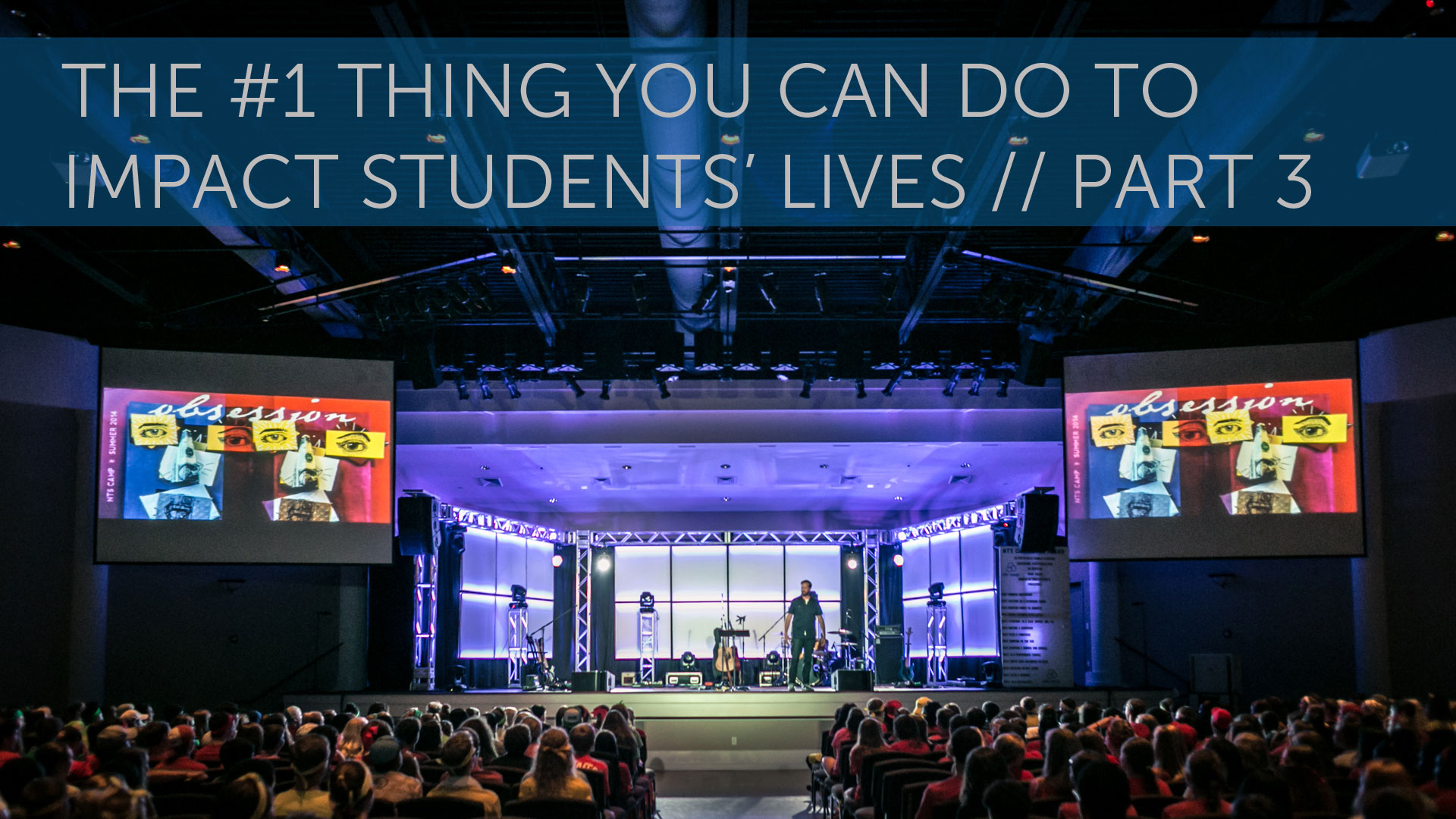If you’ve read the previous 2 posts you know that the #1 way that you can impact the life of a student is to regularly engage them in the Scriptures. We have already looked at great research that shows that Bible engagement = life change in both belief and behavior.
We’ve learned that when someone engages the Scriptures 4 or more times a week on a regular basis significant change occurs within a person.
For example, this person is:
· 229% more likely to share their faith
· 57% less likely to drink to excess
· 40% less likely to feel bitter about life
· 30% less likely to feel lonely
· 28% less likely to lie to someone.
Our own research at Never The Same concludes that 14% of middle school & high school students are engaging the Scripture 4 or more times a week on a regular basis.
So how do we change this? Is there a way to energize students to get into God’s Word on a regular basis?
The answer is yes. There are ways. Let me tell you about one.
I saw this happen with my own eyes with hundreds of students. As youth pastor, and now as a parent of adolescents, I know the result of seeing your students engaging in the Scripture. Let me share the results.
3 CHANGES BIBLE ENGAGEMENT CAN BRING
For 10 years about 2/3 of our constituency of students (totaling around 300 students each year) were engaging in Scripture 4 or more times a week.
Here are 3 major changes I observed:
1. Intensity in worship grew
Our times of corporate worship were different; students were engaged like I hadn’t seen them before. Although there were observable differences, it was mostly intangible; there was a detectable change. The passion for musical worship went to another level.
2. Our student leaders had more authority with their peers
I required student leaders to be at a certain level of Bible engagement in order to be “students leaders.” They had more leadership influence once we made this decision. It was as if they felt more confident to lead once they were more connected to God’s Word.
3. Evangelism & outreach became organic
Students began outreach initiatives on their own! Our attendance grew as well, quite dramatically. But the most important factor was that students were more actively sharing their faith with their peers.
Overall, our ministry grew BOTH deeper and wider.
CAN YOU DO BOTH?
One myth that people believe is that you must settle for being an “evangelism” type ministry or a “discipleship” oriented movement, but you can’t be both. Some believe that you can only do one of these emphases well, so just pick one and go with it. And if you pick “discipleship”, and get students growing deep, you will miss out on having an outreach and/or evangelistic focus. I could not disagree more. From my experience, we were our strongest in both discipleship AND evangelism when our ministry emphasized Bible engagement.
FLIPPING THE SCRIPT
While we self published a method to equip our students to engage in Scripture throughout the week, we flipped our “discipleship” programming to become less focused on the “program” and more focused on small group follow up and discussion/engagement. Students sat at tables, heard a brief thought on that week’s readings, and discussed with their adult leader their insights on the Text.
We went from a “we teach them” approach to a “we learn together” approach.
This transformed our entire ministry to students, even well beyond this program.
Years later, after being asked over and over from leaders across the country, we decided in 2012 at Never The Same to publish this method and called it “Don’t Climb Alone.” In just over a year since launching in summer 2013, this method is reaching students across the globe and engaging youth ministries, families, and even entire congregations in the Scriptures.
Don’t Climb Alone is built upon these 3 time tested values that set it apart and make is successful at engaging participants in regular Bible interaction:
1. Commitment
One size does not fit all with students. Participants each choose from 8 options of engagement. This not only empowers students to choose what works best for them, it empowers accountability for follow up because students are making the decision.
2. Community
When surrounded with positive peer pressure, success happens. Students are surrounded with students on the same journey. Because they are not alone, this helps build a support structure around each participant.
3. Consistency
If the path is clear, it is much easier to take. Don’t Climb Alone provides a sustainable way to engage the Scripture. And unlike a “365 day” approach, if a student derails they don’t feel like a failure for a year. DCA “reboots” every 6 weeks with a new study and a fresh start.
Using all 28 six-week guides you learn every major event, character, and theme in the Bible, and can also literally read through the entire Scripture.
Hear first hand from one of our great friends at Orange, Elle Campbell, about Don’t Climb Alone.
The bottom-line, whether through Don’t Climb Alone or another method, find one that works for your students that intentionally engages them in the Word of God.
After all, it is the most impacting thing you can do for them.
Jeff Eckart, CEO
Never The Same
© 2014, Never The Same


